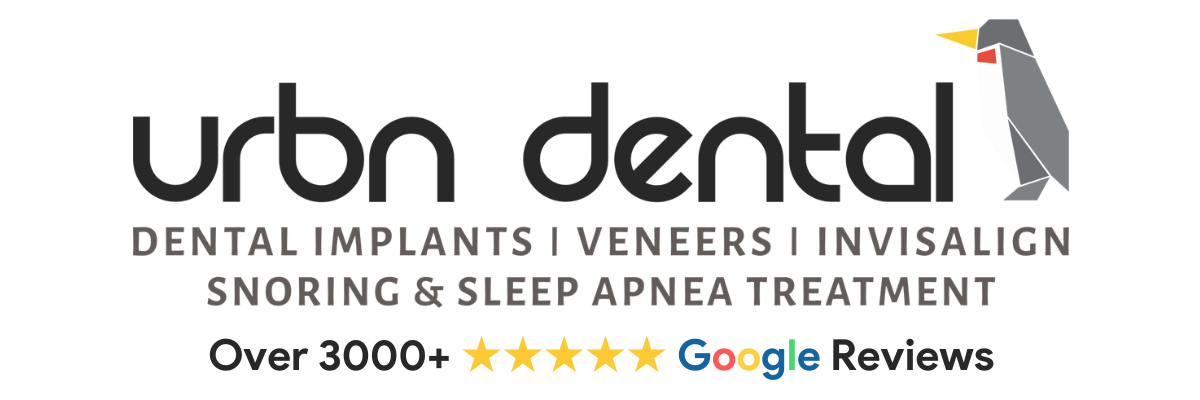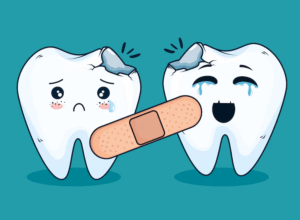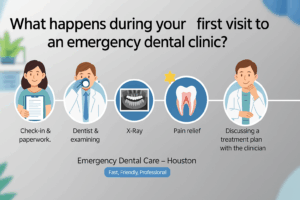Gum Pain: Diagnosis and Treatment
You must visit a dentist to get a proper diagnosis for gum pain. There are several common causes. You may suffer from gum disease, an infection, or an abscess. You may notice soreness or bleeding in the early stages of gum disease. It is important to mention this when you visit the dentist in Houston for a routine exam. Early treatment is the key to a successful recovery. An infection may cause swelling and pain. A small infection can grow into an abscess that needs draining or antibiotic treatment. You can often reverse mild gum disease with better dental hygiene at home. Advanced problems may require deep cleanings and frequent dental visits. Get control of your gum pain with an accurate diagnosis and appropriate treatment plan.
Find a Dentist to Treat Gum Pain
When you experience gum pain, you can simply visit your general dentist. You can talk to your dentist at your routine exam about discomfort or bleeding gums. If your routine exam is several weeks or months away, call for an immediate appointment. Some issues, such as a dental abscess are urgent. If you do not have a regular dentist, search online for one. You can also call your insurance provider for help finding a dentist on your plan. A general dentist can help you with gum inflammation treatment, sore gums treatment, and gingivitis bleeding gums treatment, as well as serious gum infections.
What is one of the best thing for gum disease?
Treatment depends on the severity of your gum disease. For mild gum disease, your dentist may talk to you about better care at home. You may need a different type of toothbrush or toothpaste, for example. You may also need to brush and floss more often. Treatment for more advanced gum disease may include a deep cleaning treatment and antibiotic products. Emergency Dentist can help you restore your oral health.
Sore Gums Treatment
If your only complaint is sore gums, you may need to get a softer toothbrush. You may also need to use a toothpaste that reduces sensitivity. A saltwater rinse can help clear out bacteria, as well. Visit your dentist to get a proper diagnosis. It is important to find out if you have simple sensitivity, or an underlying problem.
What are the symptoms of gum disease?
Gum disease symptoms can include swollen gums, bleeding gums, or pain. Advanced gum disease can also result in thinning and receding gums. Tooth loss is possible if the problem is not resolved soon enough.
How do I Kill Gum Disease?
You can resolve gum problems by working closely with your dentist. You may need special cleanings, antibiotic treatment, or better brushing habits. A dental clinic- Houston. TX 77027 can help you find the right treatment to get your gums healthy again.
Swollen Gums Treatment
Swollen gums can make it uncomfortable to eat and brush your teeth. You may have pain along with the swelling. The treatment for swollen gums is similar to the treatment for sore gums since the two symptoms often go together. You can continue with saltwater rinses for both soreness and swelling. You can also use a hot compress on your face to relieve swelling. Your dentist can determine if you need prescription medications to help your get your gums healthy again.
Diagnosing a Dental Abscess
You may easily notice a dental abscess on your gum line. A tooth abscess, however, can begin inside your tooth. You should notice pain or swelling with any type of abscess. Your dentist needs to find the source of the pain. You may get x-rays to check for problems in your teeth. Be very specific when describing your symptoms and the location of the pain. With an abscess you may experience some of the following symptoms.
- Sore, bleeding gums
- Pain
- Discomfort while eating
- Swollen gums
- Swollen lymph nodes
- Fever
Importance of Prompt Tooth Abscess Treatment
It is necessary to get prompt tooth abscess treatment so the infection does not spread. Bacteria in your tooth or gums can move into your jaw bones. It can also move into your bloodstream. This can cause a life-threatening situation. This is rare, however, even a minor abscess can progress if you do not seek proper tooth abscess treatment. This can also result in the loss of a tooth. Visit Emergency Dentist to protect your oral health.
What are common causes of dental pain?
Cavities, gum disease, and infections can all cause dental pain.
Variations of Dental Abscess Treatment
The treatment for your dental abscess depends on the location and severity of the problem. One of the best gum abscess treatment is often a drain of the abcess to remove the infection. If the abscess is in the tooth, you may need a filling or a root canal. If the tooth is too damaged to save, an extraction is necessary. Antibiotics are often prescribed to help the infection clear up. Antibiotic gen can also work on the gums. The main goal of your dentist is to preserve your dental health. Dentists usually work hard to save a tooth. An extraction is the last option and is used when infection is long-term, recurring, or has damaged the tooth.
What to Expect from Gum Abscess Treatment
Your dentist begins treatment with the intention to get rid of the infection first. If there is damage to your gums, follow-up treatment is necessary. The dentist examines the abscess to find out how severe it is. Once this is determined, you may get a prescription for antibiotics or the dentist may drain the abscess before you leave the office. With an oral antibiotic or antibiotic gel, you can expect the abscess to clear up in a few days. When the abscess is drained, relief is immediate. You must keep the area very clean while it heals. Oral antibiotics or a topical solutions are often used to prevent recurrence of the infection.
Conclusion
Gum disease may start out as mildly sore or swollen gums. With gingivitis, you may experience bleeding from the gums when brushing your teeth. When the health of your gums is compromised, infection can easily take over. If you have symptoms of an abscess, get help quickly. Your dentist can recommend a treatment to clear the infection. This usually resolves pain quickly. Treatment for gum disease should follow to keep infections from recurring. Make an appointment with an Emergency Dentist to get relief from your dental abscess today.
Summary:
You can visit your dentist regularly to prevent gum disease and decay. It is not normal for your gums to hurt. Even gum sensitivity may require treatment from your dentist. When you go to the doctor for a dental cleaning or exam, your dentist may ask if you have noticed any problems. Issues with your gums may also show up during your cleaning. Unhealthy gums may appear swollen or bleed excessively. Be sure to mention any pain or discomfort to your dentist during the visit. If you are in the early stages of gum disease, the dentist may advise you to brush more often and floss regularly. You may also need a deep cleaning to get things under control. If your gum disease is progressing quickly, you may also get a deep cleaning and several follow up appointments. Your dentist may recommend more frequent cleanings and a strict regimen at home. You may need to start using a softer toothbrush so your gums do not deteriorate or tear. Damaged gums can lead to an abscess. You may also need a prescription mouthwash to keep your mouth extra clean. Oral antibiotics, antibiotic microspheres, and antibiotic gel can all help alleviate gum disease. You can benefit from the use of a water flosser if regular floss is causing too much pain or bleeding. Treatment for gum issues can involve a quick drain of an abscess, a week of antibiotics, or several months of dental treatments. Severe cases can even last many years. If you suspect any problems with your gums, head to the dentist immediately. Gum disease is often seen in patients that avoid routine dental appointments. Severe gum disease can cause you to lose teeth and may require surgical grafts to the gums. A dentist Houston can successfully treat many causes of gum pain, restoring your oral health.





